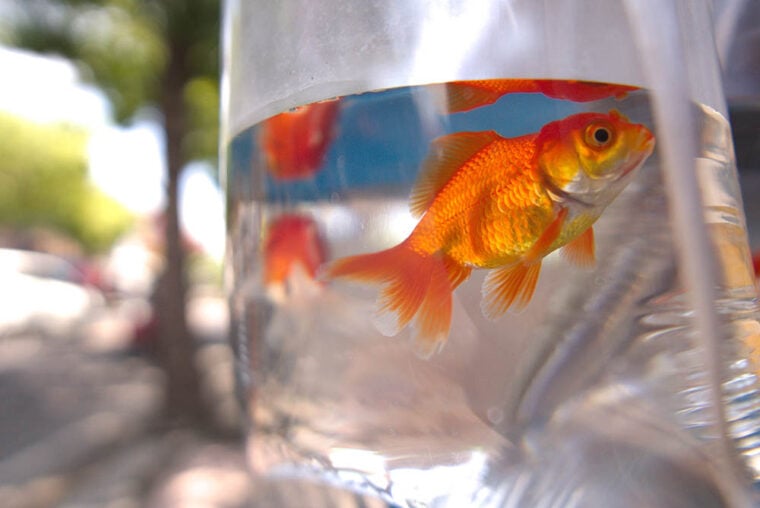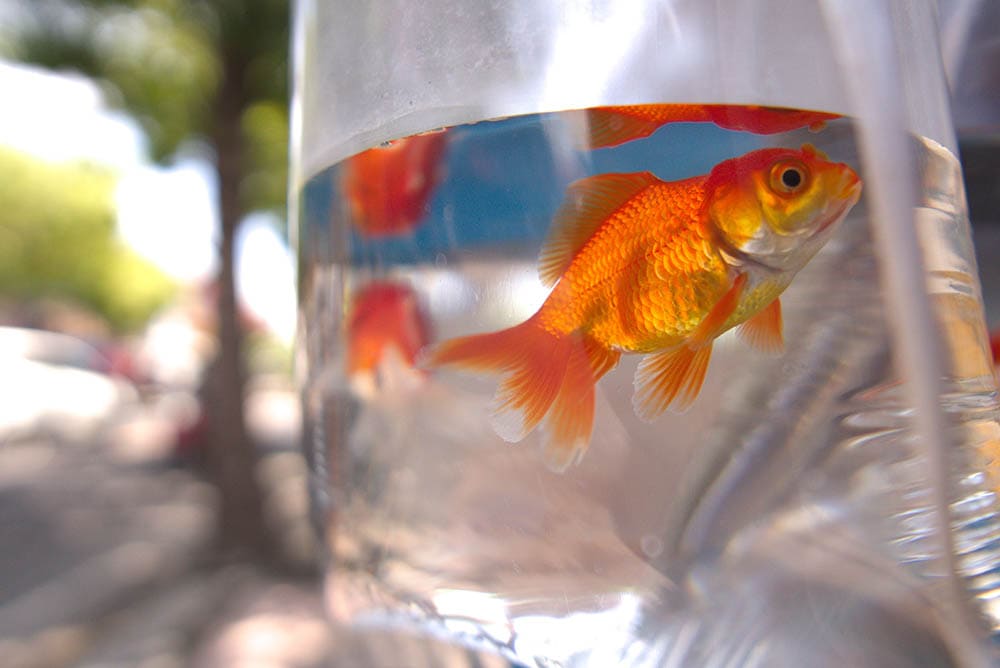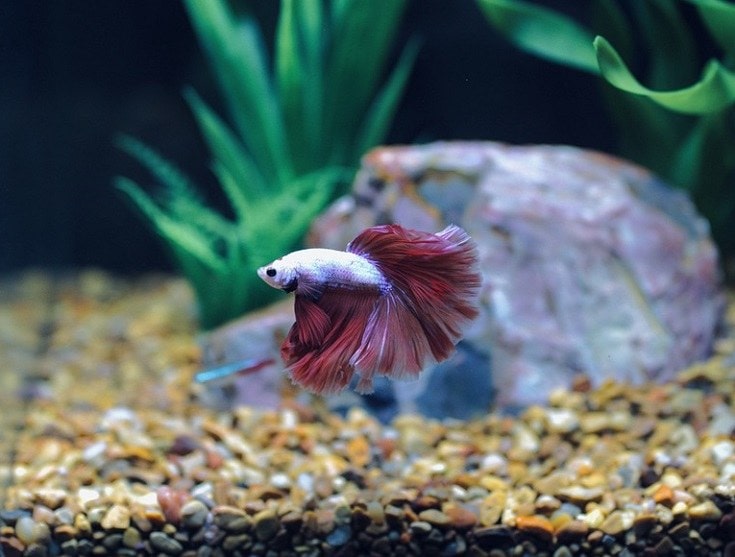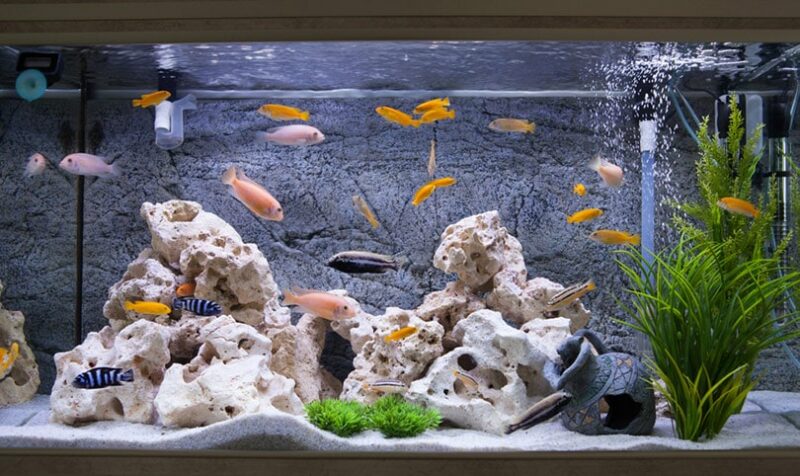
If you just purchased a fish and want to safely transport them home, or you are wanting to move them to a new aquarium or take them with you when you move, you need to make sure they are transported safely. Fish are more difficult to transport than other types of pets because you need to make sure that the fish’s water is within the ideal temperature range and has the appropriate water parameters.
We have compiled some tips and tricks that are important to consider when transporting your fish long or short distances.
 The 7 Tips for Transporting Fish
The 7 Tips for Transporting Fish
1. Use a Plastic Bag
Plastic bags are the most popular way to transport your fish. You can purchase large, clear plastic bags from your local fish store. The plastic bag should, naturally, be free from any holes that can cause the water to leak through.
The bags should be strong and be able to support a large volume of water, so it is best to avoid plastic grocery bags because they have been constructed to hold solid items and not water. You can place two plastic bags inside of each other for extra support in case one of the bags breaks during transport. Tie the top of the bag securely with an elastic bag once you have placed your fish inside.
2. Add In Old Aquarium Water
When placing water in your fish’s transport bag or container, make sure that you fill it up with about 80% to 90% water and leave a layer of air above the waterline. The water in your fish’s aquarium will contain traces of beneficial bacteria and the same water parameters that your fish is used to so that you do not stress out your fish.
Avoid filling the transport bag or container with new tap water that has not been dechlorinated yet as chlorine and other heavy metals found in tap water are harmful to fish.
For long trips, you can add in ammonia neutralization liquids into this water, which will keep your fish safer for longer trips. You can also add in some cycling bacteria (which are available commercially) to the bag as well.

3. Use a Portable Air Pump for Oxygen
If you are transporting the fish for a long time, they will need oxygen. You can use a portable air pump hooked up to airline tubing and an air stone that can be placed inside of the bag or container to provide your fish with surface agitation for oxygenation. This is only necessary if your fish is being transported for more than a few hours because the air in the plastic bag will eventually run out.
4. Place The Plastic Bags In a Container
Try placing the plastic bags with fish into a container so that the bags do not roll around if they are being transported in a moving vehicle. If the bag is constantly moving around and falling over, it can stress your fish out even more.
The plastic container does not need to have a lid as the bag should be placed inside for extra support. The container will also be useful in case the bags were to leak, as you can place the fish inside the container during an emergency. An alternative approach would be to place your fish bags in a bucket, the bucket will act as a reservoir of water in case a bag breaks during transportation.

5. Use Disposable Gel Heating Packs for Tropical Fish
If you are transporting tropical fish a long way, you can use a disposable gel heating pad because the water will start to cool down to the surrounding temperature during transportation. This is necessary if you are transporting tropical fish for more than an hour.
The disposable gel heater should not be placed directly against the bag because it can cause the water to become too warm or damage the plastic and cause a leak. Instead, the tropical fish should be placed in a bag inside a container and a towel or blanket should separate the heating pad and plastic bag.
6. Do a Water Change In The Aquarium
You should do small water changes in the fish’s aquarium several days before you plan to transport the fish for a long distance. This will ensure that the water you fill in the plastic bag or container they are transported in will be fresh. The water in the bag will not retain its freshness for long, so it is essential to ensure the water being used has an ammonia and nitrite reading of 0 ppm (parts per million).
A water test can be done to get a reading of the aquarium waters’ ammonia, nitrite, and nitrate levels before you use the water, as unstable water parameters can be deadly for fish.

7. Avoid Feeding Your Fish During Transport
Fish can survive a few days without food, so it is not necessary to feed them while they are being transported. Most fish will be too stressed to eat, and food can quickly cause the water to become foul and toxic for the fish as the ammonia level rises. Any food that your fish does not eat will sink to the bottom and start to dissolve which alters the water parameters. You can feed your fish once they have reached their destination and are placed back into the main aquarium.
How Long Can Fish Survive In a Bag?
Most fish can survive in a plastic bag for up to 48 hours, which is usually plenty of time for transporting fish. The fish will have a higher chance of survival in a plastic bag when being transported if there is a large volume of water in the bag and enough space for oxygen to be sealed inside alongside some chemicals to neutralize ammonia that the fish produce. Tropical fish are slightly trickier to transport (depending on where you live) because you need to ensure that the water is being slowly heated to their desired temperature range.
After You Relocate
It is best to not feed your fish for a day or two after you move (assuming you have healthy, adult fish). This gives your tank’s bacteria colony enough time to slowly adjust to the change (the loss of some bacteria is often inevitable during a move). Aquarium cycling products can be used for a week or so to ensure water safety for your fish.
It is VERY important to check the source of the water at your new location – if it’s too different from your previous location’s water, you’ll need to slowly acclimate your fish to the new water. If fish are relocated in the dark, they shouldn’t be immediately exposed to bright lights, and should be left in dim conditions for a period of about 2-3 days after introducing them back to the tank. This period is often stressful for live plants, therefore, it’s best to temporarily place them elsewhere while your fish adjust to their new environment.
Safety Precautions For Aquariums
Please be mindful that moving large aquariums, especially those made of glass, requires extreme caution. Glass can easily shatter if the pressure forced on the walls are uneven. In addition, an aquarium full of water is exceptionally heavy. Excess water should be removed from the tank, leaving just a small amount of water above the substrate. Filter media should not be allowed to dry out during transport, and should remain submerged for the journey. It is strongly recommended to hire professional help to move aquariums. When placing an aquarium in a new location, its contact to the floor should be simultaneous with all its corners; an uneven placement on the ground can result in a shattered aquarium.
Conclusion
Transporting fish can be quite stressful so it should only be done when necessary. Most fish will have been transported at some point in their lives, as breeders will usually transport fish in plastic bags to pet stores or customers if you ordered a fish online.
It is important to make sure you place your fish in a secure bag that has clean aquarium water inside, and that you avoid feeding them during the time they are being transported. Most fish will be stressed and disorientated after being transported, so they are likely to hide away and act abnormal a few hours after until they become settled again.
Also see:
Featured Image Credit: Alina Veneralova, Shutterstock


 The 7 Tips for Transporting Fish
The 7 Tips for Transporting Fish







